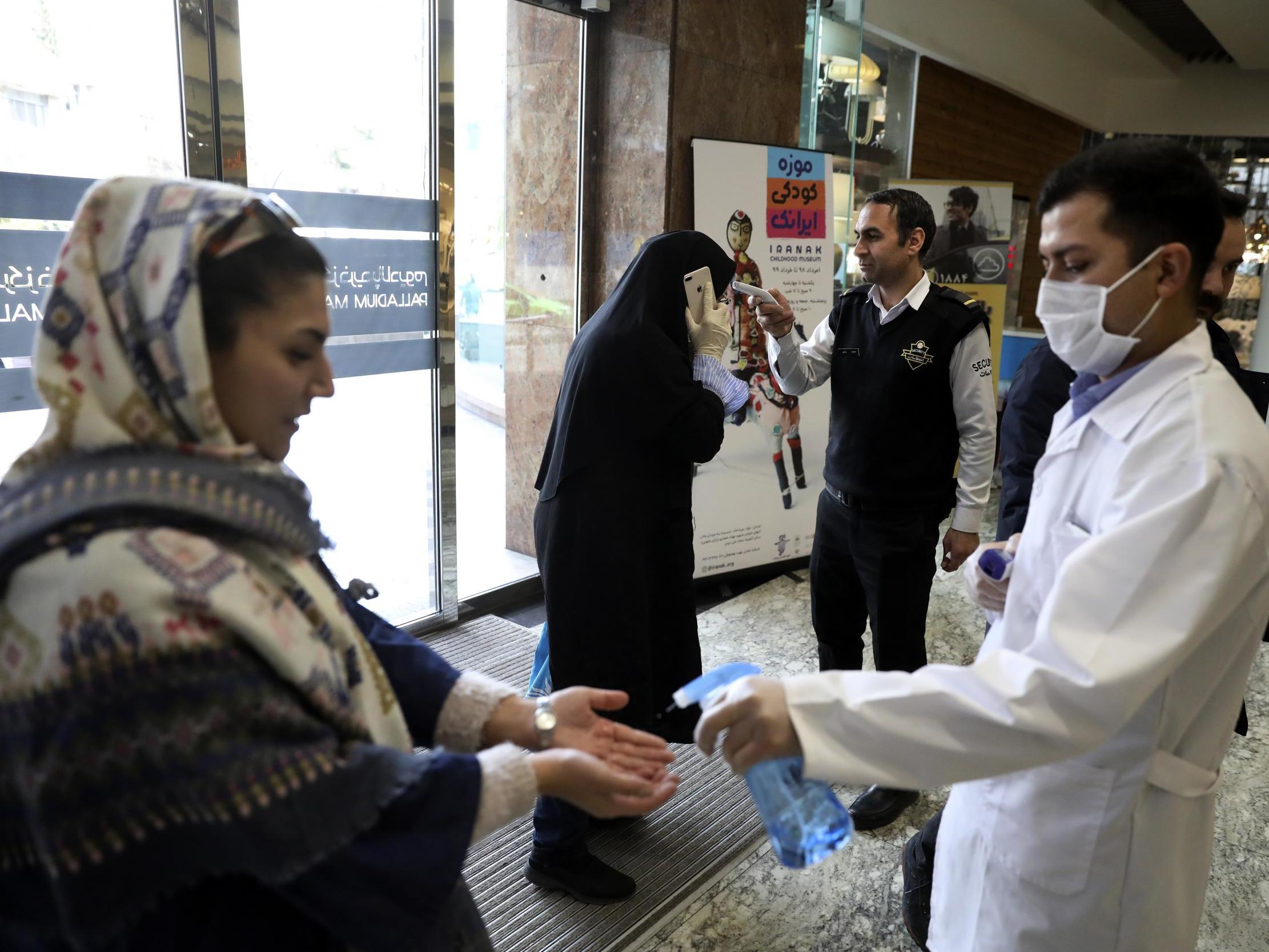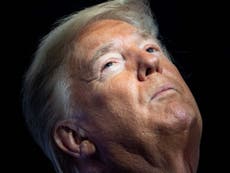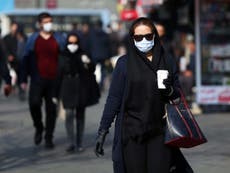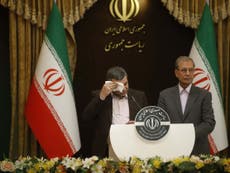Coronavirus has hit Iran’s ‘resistance economy’ set up to combat US sanctions – and ordinary Iranians are worried
Some fear being cut off from the outside world, particularly if tourism drops, writes Kim Sengupta


Stuck away off a dual carriageway heading out of Tehran is a business centre, grey and anodyne, with extensions bolted on and a set of copper chimneys on top. Inside are a set of start-up ventures, part of Iran’s response to Donald Trump’s draconian sanctions imposed after he pulled the US out of the deal with international powers on the country’s nuclear programme.
Inside, in modern open-plan offices, young people sit with their laptops, swapping their desks for think-pods for reflections or discussions, and beanbags to rest and sleep. Targets of customers and revenues are set: the chimneys emit celebratory smoke when they are met.
The Iran Export and Investment Centre is situated in one corner of the main building. It is an important conduit for the start-ups, and also an integral part of the “resistance economy” the supreme leader, Ayatollah Ali Khamenei, has declared the country needs to combat the economic war America has unleashed.
The punitive financial measures imposed on Iran are among the harshest by Washington on any country. The US Treasury has blacklisted a thousand organisations and individuals, aimed at nearly all sectors of the Iranian economy. It has also taken the unprecedented step of designating a state military organisation, the Revolutionary Guards Corps (IRGC), a “foreign terrorist organisation”.
The Trump administration’s “maximum pressure” policy is either aimed at regime change, as some current and former members of the Trump administration had advocated, or intended to force Iran back to the negotiating table over a nuclear deal. Neither has been achieved, but it has certainly caused some damage in the process.
The country is in an inflationary recession. The rial has lost two-thirds of its value. Oil exports, the main source of state revenue, have fallen by half. Unemployment, especially among the young, has risen sharply and the standard of living has fallen for large sections of the community. Although food and medicine are meant to be exempt from the sanctions, many families have to go without meat for their meals and there is a shortage of some specialist medicines.
But Iranians have experienced such severe challenges before and survived, I was repeatedly told by political hardliners who had just won a resounding victory in the parliamentary elections, inflicting a major defeat on the reformists who were responsible for the nuclear agreement.
And, historically, that has indeed been the case. More than 50 per cent of the oil revenue was lost during the war with Iraq in the 1980s, the Asian financial crisis in 1997, and the US sanctions and the European oil embargo of 1997. Oil sales, this time, have been badly hit since the six-month exemptions on sanctions given to the main importing countries ran out. Trade of around 2.3 million bpd (barrels per day) had fallen to an estimated 1 million bpd.
But there have been some successes behind the scenes. The Trump administration is nowhere near its declared aim of reducing Iran’s oil exports to zero. According to industry analysts, another 400,000 bpds are being supplied surreptitiously. Iran is believed to have restarted its programme of using “ghost ships”, switching off automatic traffic system signals, to hide their destinations, making it difficult to find origin, route and unloading date of the vessels. There are also ship-to-ship oil transfers, use of remote ports and reflagging of vessels.
There has also been a focus on diversifying exports, driving sales of non-oil products. This has been achieved, officials were keen to point out, because Iran has had to learn how to get around sanctions. The showroom of the Export Centre was full of items being supplied abroad often using innovative and ingenious methods to do so.
Walking through the room Amir Vehadi, the marketing manager, pointed to the examples displayed of how Iran was still open for business despite the US efforts. There were dashboards and grills for Peugeots and Suzukis: Persian blue salt and semi-precious stones; plastic pipes to prosthetics; car batteries and coffee.
Vehadi also wanted to stress how Iranian brainpower allied with cheap costs was also a valuable tool in such a time of adversity. “We carried out research into the cost of producing an app for a mechanical product and one that cost $300 [£232} to make in Iran would cost $1,000 in India and almost £5,000 in London. These are the kind of things we are looking at,” he said.
Various tactics were being used to circumvent US secondary sanctions, Vehadi wanted to point out, including one that is crucial. “We can change the point of origin of products, we have become quite successful at this,” he said. “Our partners are aware of this and we have to trust each other. And we also have to guarantee delivery: that too is a matter of trust. In fact, the key things in all this are trust and flexibility, use of things like the barter system. Despite the sanctions, things are going well.”
But then came coronavirus, with a hammer blow the US Treasury had not managed to land despite all its efforts.
The first reports of the virus and deaths came a few days after my visit to the Export Centre. This was rapidly followed by other ones amid accusations and recriminations about whether the government was covering up the true extent of the contagion.
Soon it emerged that the situation was far more serious than officials were admitting. Now, according to health authorities, the death toll stands at 92 out of a total of 2,920 infections. This makes Iran having the highest numbers of Covid-19 fatalities outside China. But the real figures in the country may be even higher.
Many of the infections in neighbouring states had Iranian links, and one by one they started shutting out Iran. Fifteen countries – United Arab Emirates, Iraq, Turkey, Afghanistan, Pakistan, Russia, Oman, Azerbaijan, Turkmenistan, Kuwait, Qatar, Kazakhstan, Armenia, Bahrain and Saudi Arabia – have imposed restrictions: most have now shut their borders and cut air links.
Many of these countries are the ones on which Iran depends for trade after the US sanctions effectively cut it off from the global economy. Trade centres have been set up in many of these places and also further afield, such as in India. The non-oil trade had a value of $36.5bn in the Iranian calendar year ending in March 2019. The aim for the next calendar year, said Mohammad-Baqer Nobakht, an adviser to President Hassan Rouhani, “was to bring non-oil exports to $48bn”.
Hamid Abid Zadeh, the CEO of the Export Centre, told me: “We are having to hold our exports now because the borders are blocked. It is impossible to continue for the time being. We had made a lot of efforts on exports and we have been succeeding with many products. What we are doing at the moment is carrying out market research with our employees in neighbouring countries.”
Other bodies like the Export Centre dealing with foreign trade are in the same boat. The repercussions have been widespread. The market index at Tehran Stock Exchange has been falling sharply: a large number of companies performing well depended on exports. According to the Chamber of Commerce, every day of closures in the business sector, with offices shutting and employees staying at home, costs the already ailing economy an estimated $164m.
The tourist industry had been a major beneficiary when the nuclear deal was signed in 2015. More than 5.5 million foreign visitors came a year later. About half the numbers were Shia pilgrims from the Middle East; others came from the Americas, Europe and south and east Asia. The benefit to the economy was estimated at $8bn: The Iranian government says it aims to host 20 million tourists by 2025, raising revenues to $30bn and creating around 650,000 job.
Three years ago I met groups of European tourists in Isfahan. Trump was gearing up to leave the nuclear agreement, threatening to isolate Iran, charging it was a terrorist state, but the holidaymakers, most of them young couples, were not unduly concerned.
“Not only is this a beautiful country, but I feel pretty safe here,” Matilde Lejeune, 27, from Paris, said at the time. “We have had many terrorist attacks in Paris where I live, and also in Nice – it is now something we have begun to expect. I do not feel that tension here and also, personally, my friends and I have not been hassled at all in any way. Also we don’t like what the Americans are doing and we want to show out support for the Iranians.”
Tourism trailed off from the west after the US pulled out of the nuclear deal and imposed travel restrictions on Iran. But there were still some coming from Europe and sizeable numbers from neighbouring countries. But the arrival of coronavirus has had a shattering effect. Nowruz, the Persian new year, starting on 20 March was meant to be a particularly busy time, but, say tour operators, they are in despair.
The Association of Hotel Owners in Shiraz, one of the popular destinations, warned there will be bankruptcies after 80 per cent of hotel reservations were cancelled. Ninety per cent of the hotels in Mashhad, one of the holiest of Shia cities, have no guests. Another destination for religious visits, Qom, is empty of foreigners, unsurprisingly, as the Iranian outbreak of the virus started from that city.
Maghsoud Asa’di Samani, the secretary of the Association of Iranian Airlines, says that there would job losses in the aviation industry as well as the tourism sector unless the situation improved – and he could not see how that was going to happen.
“It is depressing, I don’t know if I’ll have a job for much longer because of what’s happening” says Farhad Iravani, who works for a travel company. “it is not just business. We are getting more and more cut off in Iran from the outside world and it was so nice to have people from different countries here.
“The government has asked operators to refund all deposits. We can understand the reasons behind that, but we were already suffering because of cancellations when the Americans killed the martyr [Gen Qassem] Soleimani] and then the protests. But nothing prepared us for coronavirus: it’s a disaster.”
Matilde Lejeune was planning a trip to Iran this spring with visits to Shiraz and Yazd. But that is not going to happen. “We are not going anywhere, not even leaving Paris,” she says. “My sister has just cancelled the skiing trip in the Dolomites [Italian Alps] so it’s not just Iran.
“But I feel really sorry for the people of Iran – they are having a hard time and now the coronavirus is making them even more isolated. It is very sad.”






Join our commenting forum
Join thought-provoking conversations, follow other Independent readers and see their replies